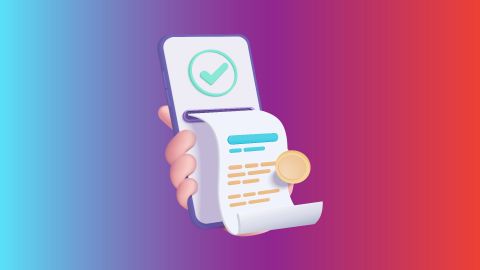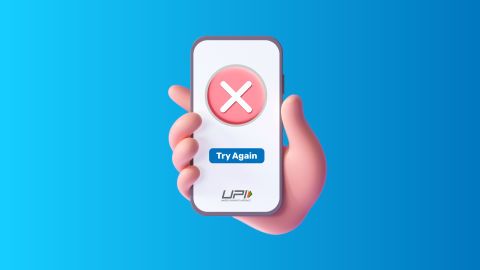Prepare your home for electrical safety during natural disasters. Get expert tips on power outage survival, using generators, and disaster recovery strategies.
Managing electricity during natural disasters
-
-
Managing electricity during natural disasters is crucial for ensuring safety, minimising damage, and facilitating recovery. Natural disasters such as hurricanes, floods, and earthquakes can disrupt power supply and create hazardous situations, including electrical fires and electrocution risks. Proper management of electrical systems before, during, and after such events can significantly reduce these dangers.
By being proactive about electrical safety, individuals can protect themselves, their families, and their properties from the potentially devastating impacts of disasters.
For efficient electricity bill payment, consider using Bajaj Pay for seamless transactions.What to do before a natural disaster strikes: Electrical safety tips
To prepare for severe weather and ensure electrical safety, start by having a qualified electrician inspect your home's electrical system to confirm it meets safety standards.- Install surge protectors to shield sensitive electronics from power surges caused by storms or lightning.
- Develop an emergency plan outlining how to safely disconnect power and communicate with family members during a disaster.
- Secure all loose wires and cords to prevent tripping hazards or damage during high winds or flooding.
- Familiarise yourself with your circuit breaker panel, labelling circuits for easy identification during emergencies.
- Stock up on essentials like flashlights, batteries, and portable chargers to manage power outages effectively.
- Consider investing in backup power sources, such as generators or battery packs, to maintain critical functions.
- Before a storm, unplug non-essential appliances to minimise damage from power surges.
How to safely disconnect power during a disaster
1. Assess the situation: Before disconnecting power, evaluate the severity of the disaster. If flooding or severe winds are imminent, prioritise safety.
2. Turn off appliances: Unplug non-essential appliances to prevent damage. This includes televisions, computers, and kitchen appliances.
3. Locate the main circuit breaker: Find your main circuit breaker panel in basements or utility rooms.
4. Switch off individual circuits: If time allows, turn off circuits for major appliances before shutting off the main breaker.
5. Turn off the main breaker: Flip the main circuit breaker switch to the "OFF" position to disconnect power from your home.
6. Stay away from water: If flooding occurs, do not attempt to touch any electrical equipment or outlets if they are wet or submerged.
7. Wait for professional help: Do not restore power after a disaster until a qualified electrician has inspected your system for safety.Handling power outages: Tips for staying safe and prepared
- Keep emergency supplies ready: Maintain an emergency kit with water, non-perishable food, medications, flashlights, batteries, and a first-aid kit.
- Use battery-powered devices: Rely on lanterns instead of candles to reduce fire risks during outages.
- Limit phone use: Conserve battery life on mobile devices by limiting usage and turning on battery-saving modes when possible.
- Stay informed: Use battery-operated radios or mobile apps to receive updates about the situation from local authorities.
- Avoid opening refrigerators: Minimize opening refrigerator and freezer doors to keep food cold longer during outages.
- Check on neighbours: If safe, check on neighbours needing assistance during power outages, especially the elderly or disabled.
Backup power solutions: Choosing the right generator for emergency use
When selecting a generator for emergency use during power outages caused by natural disasters, consider the following factors:- Power needs assessment: Calculate the total wattage required to run essential appliances like refrigerators, medical equipment, and lights.
- Generator type: Portable Generators
- Fuel type options: Gasoline Generators
- Safety features: Look for generators with automatic shut-off when oil levels are low.
- Noise levels: Choose models that operate quietly if noise is a concern in residential areas.
- Maintenance requirements: Consider how easy it is to maintain the generator; regular maintenance is crucial for reliability during emergencies.
- Budget considerations: Balance upfront costs with long-term benefits; investing in a quality generator can save money in the long run by protecting against food spoilage and other losses.
Electrical disaster recovery: Ensuring safe power restoration
- Wait for professional assessment: Do not restore power until an electrician has inspected your home’s electrical system for safety concerns.
- Inspect for damage: Check for visible signs, such as frayed wires or water exposure.
- Report issues immediately: Contact your utility company if you notice downed power lines or other hazards.
- Follow utility company instructions: Wait until utility crews restore service before attempting any reconnections.
- Gradual restoration of power: Start by turning on essential circuits first, such as those for the refrigerator and lights.
- Consider upgrades post-recovery: After recovery, assess whether your electrical system needs upgrades to withstand future disasters better.
Common electrical hazards after a disaster and how to avoid them
Flooding risks: Avoid using electrical equipment submerged in water until inspected by an electrician.
Downed power lines: Stay clear of downed lines and report them immediately, as they pose electrocution risks.
Generator safety hazards: Place generators outdoors and away from windows to prevent carbon monoxide poisoning.
Damaged wiring systems: Inspect wiring systems after flooding or fire, as damaged wiring can lead to short circuits or fires.
Improper use of extension cords: Avoid overloading extension cords; use them only as intended and ensure they are rated for outdoor use if needed.
Unstable structures affecting electrical systems: Be cautious around buildings with structural damage that might impact electrical systems; consult professionals before entering such areas.Using NFPA 70B: A guide to safe electrical disaster recovery
NFPA 70B provides guidelines aimed at ensuring safe practices in electrical maintenance and disaster recovery:- Regular inspections: Conduct routine inspections of electrical systems before disasters to identify potential vulnerabilities.
- Emergency response planning: Develop an emergency response plan incorporating electrical safety protocols based on NFPA recommendations.
- Training personnel: Ensure all relevant personnel are trained in safe electrical practices according to NFPA standards.
- Documentation maintenance procedures: Keep detailed records of maintenance activities performed on electrical systems to comply with NFPA guidelines.
- Post-incident evaluations: After any electrical system incident, conduct evaluations following NFPA 70B recommendations to enhance future responses and safety measures.
Ensuring your home’s electrical system is disaster-ready
- Conduct an electrical audit: Hire a certified electrician to assess your home’s wiring system for compliance with current codes and standards.
- Upgrade old wiring systems: Replace outdated wiring with modern materials that can better handle increased loads and resist environmental factors.
- Install ground fault circuit interrupters (GFCIs): GFCIs protect against electric shock by shutting off power when they detect ground faults; install them in areas prone to moisture.
- Use arc-fault circuit interrupters (AFCIs): AFCIs help prevent fires caused by arcing faults in wiring; consider installing them throughout your home.
- Secure outdoor equipment properly: Ensure outdoor outlets are weatherproofed and protected against flooding; use covers designed for outdoor conditions.
- Maintain clear access areas around panels/wiring: Keep areas around circuit panels clear of obstructions for easy access during emergencies.
- Educate family members on electrical safety procedures: Teach all household members about basic electrical safety practices in case of emergencies involving electricity.
-
Recharge and Pay Bills
Mobile Prepaid
Mobile Postpaid
Broadband Bill Payment
Electricity Bill Payment
Bajaj Finserv App for All Your Financial Needs and Goals
Trusted by 50 million+ customers in India, Bajaj Finserv App is a one-stop solution for all your financial needs and goals.
You can use the Bajaj Finserv App to:
You can use the Bajaj Finserv App to:
- Apply for loans online, such as Instant Personal Loan, Home Loan, Business Loan, Gold Loan, and more.
- Explore and apply for co-branded credit cards online.
- Invest in fixed deposits and mutual funds on the app.
- Choose from multiple insurance for your health, motor and even pocket insurance, from various insurance providers.
- Pay and manage your bills and recharges using the BBPS platform. Use Bajaj Pay and Bajaj Wallet for quick and simple money transfers and transactions.
- Apply for Insta EMI Card and get a pre-approved limit on the app. Explore over 1 million products on the app that can be purchased from a partner store on Easy EMIs.
- Shop from over 100+ brand partners that offer a diverse range of products and services.
- Use specialised tools like EMI calculators, SIP Calculators
- Check your credit score, download loan statements and even get quick customer support—all on the app.
Frequently asked questions
Why is it important to manage electricity during natural disasters?
Managing electricity ensures safety, minimises hazards like electrical fires, and supports essential services during disasters.
What are some essential electrical safety tips before a disaster strikes?
Inspect your electrical system, install surge protectors, secure wires, and prepare backup power sources like generators.
How do I safely disconnect power during a disaster?
Turn off non-essential appliances, locate your main circuit breaker, and switch it off to disconnect power.
What should I include in an emergency kit for power outages?
Stock flashlights, batteries, portable chargers, water, non-perishable food, and a first-aid kit.
What precautions should I take when using a generator during a disaster?
Place generators outdoors, away from windows, to prevent carbon monoxide poisoning and follow maintenance guidelines.
Show More
Show Less




